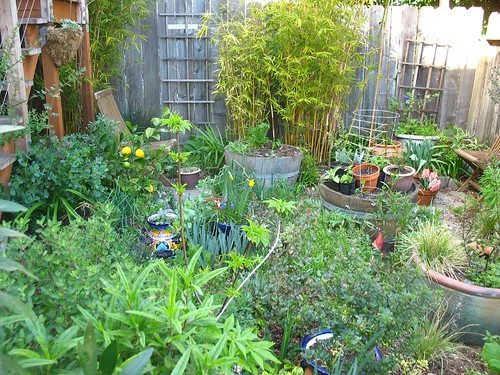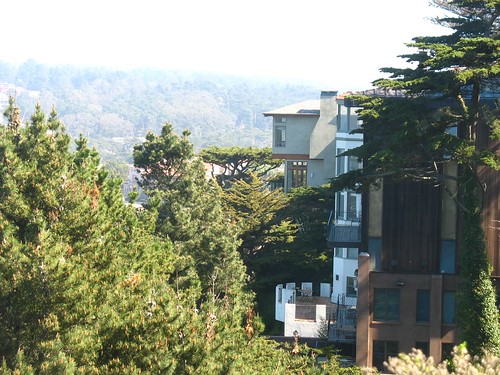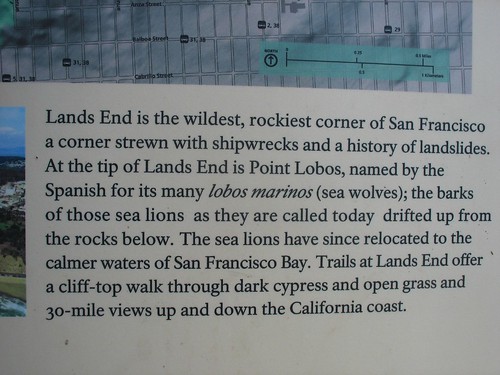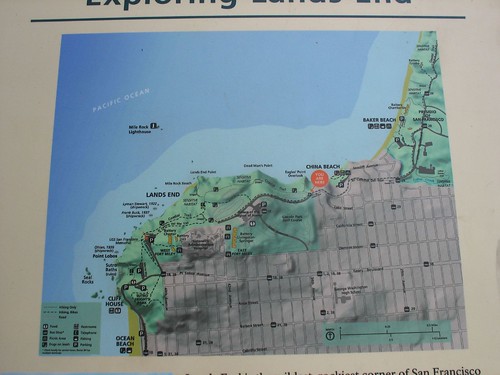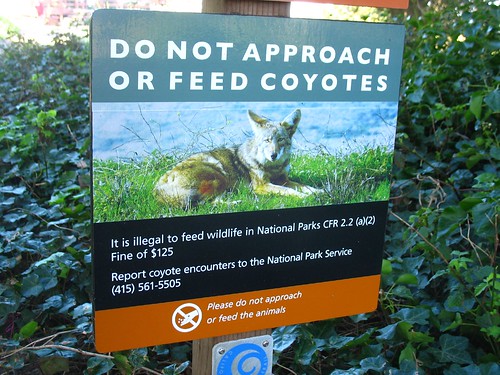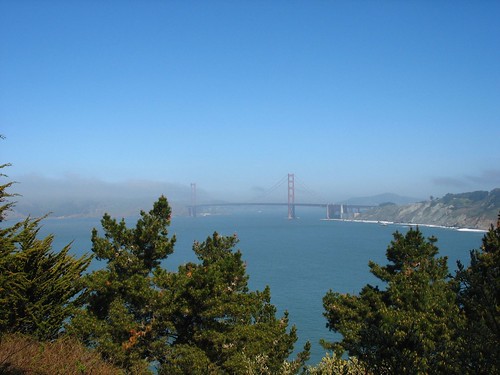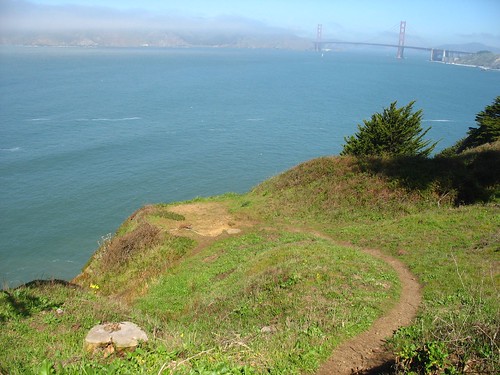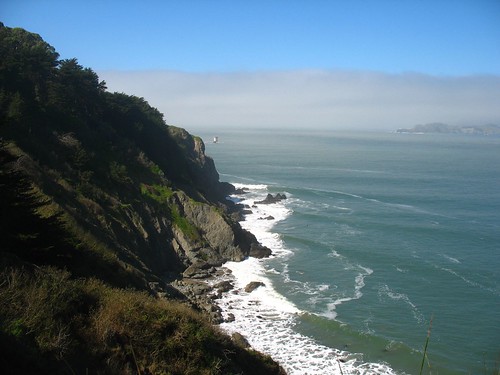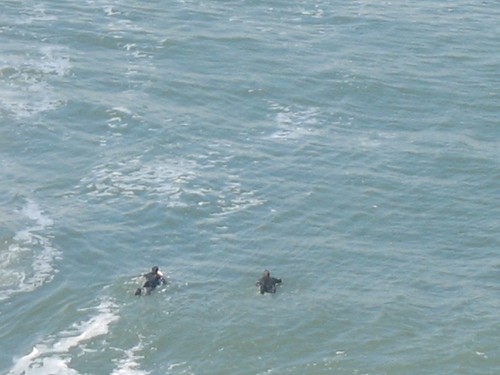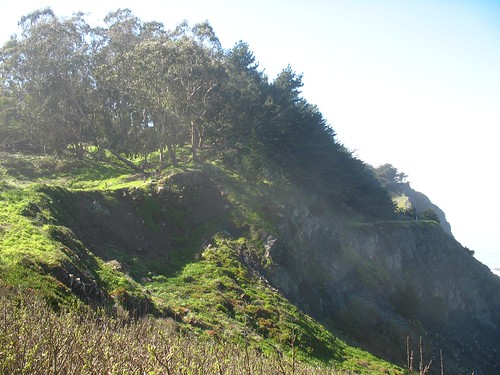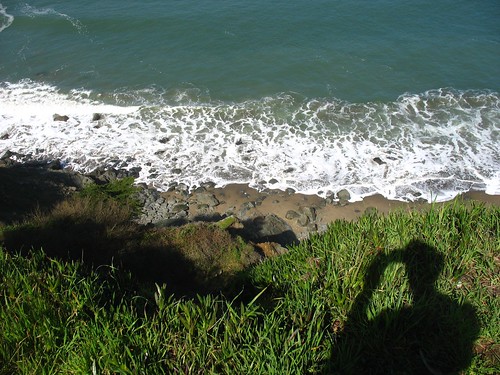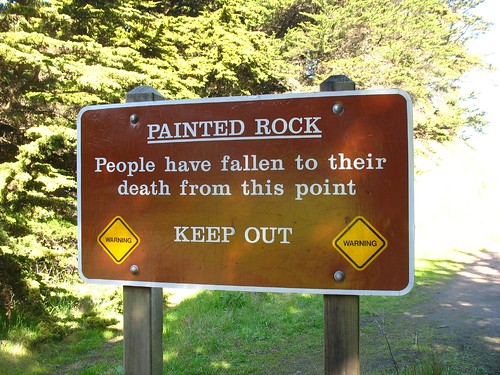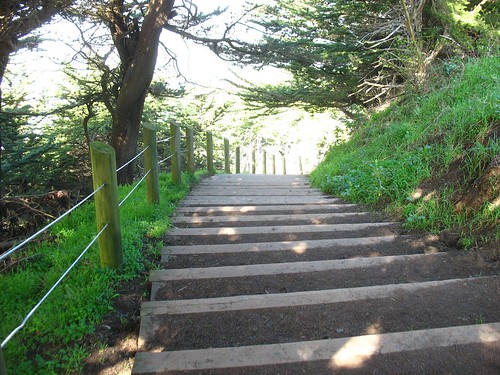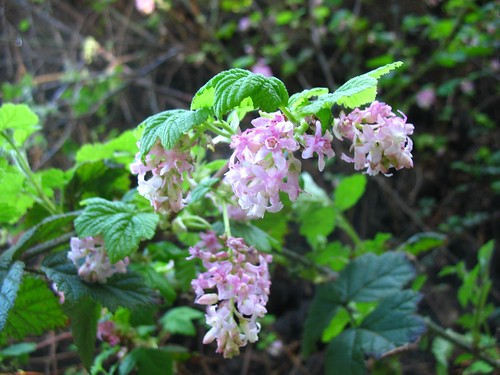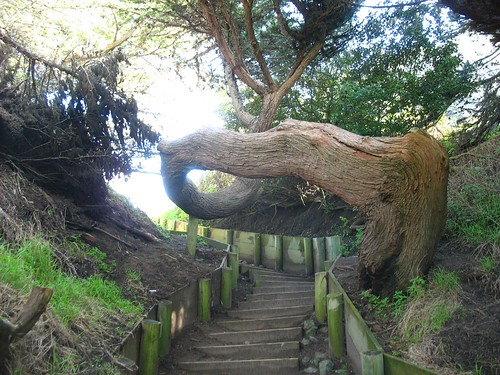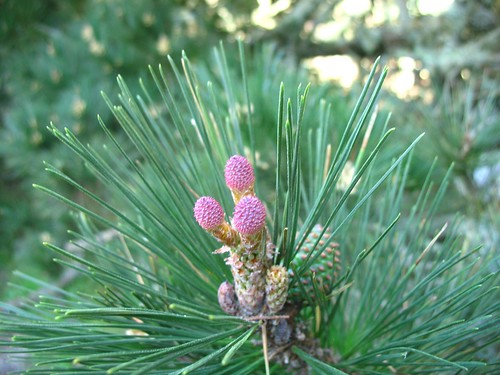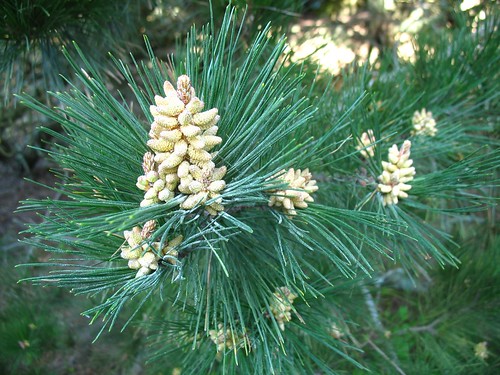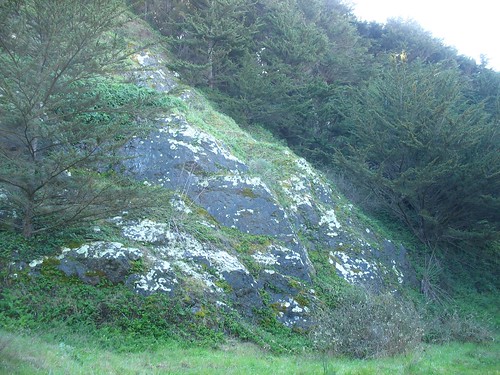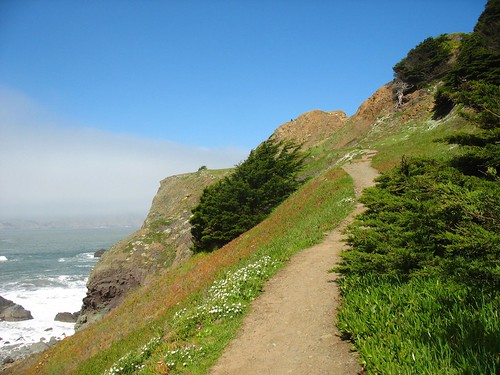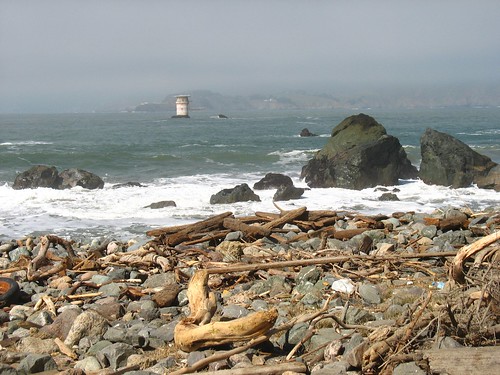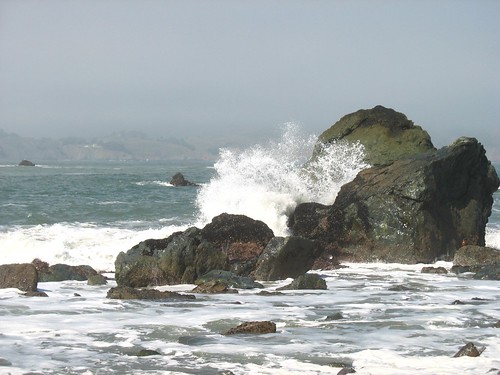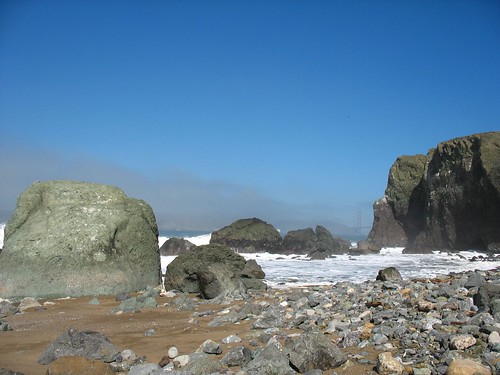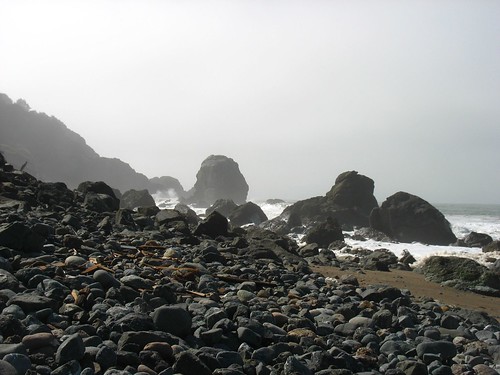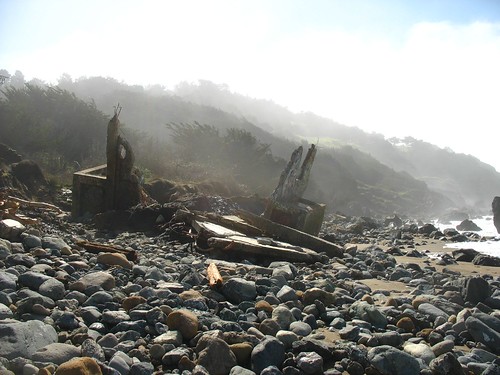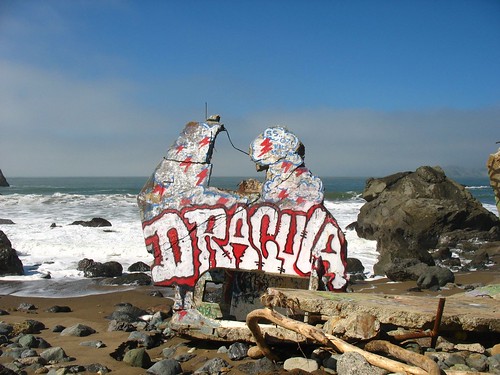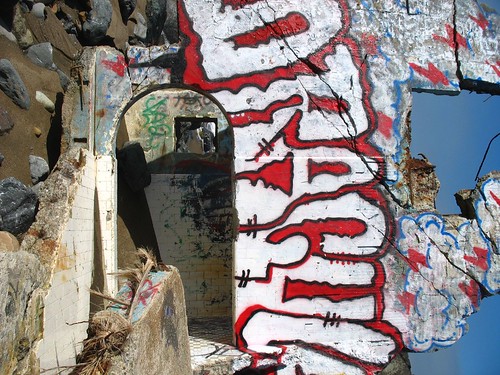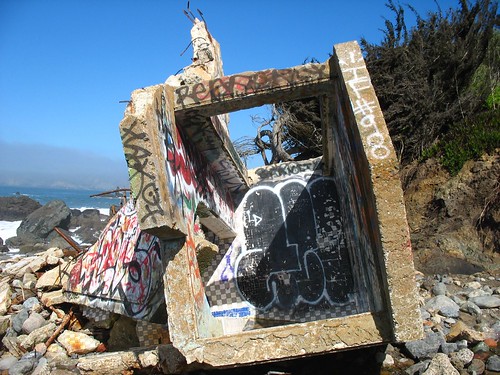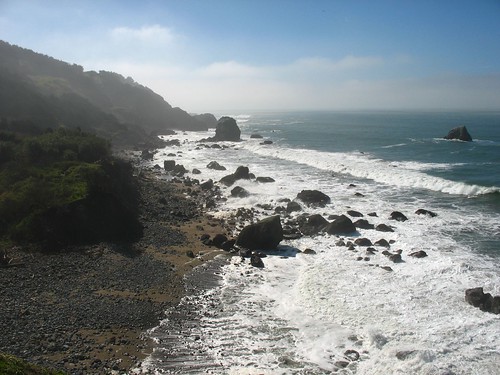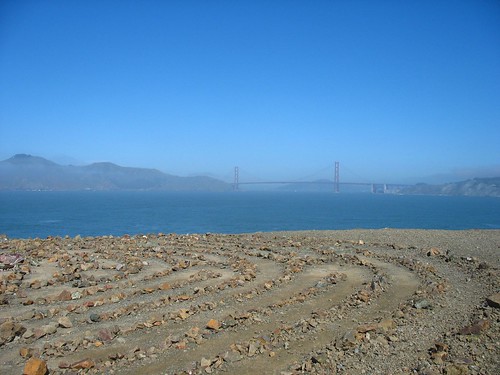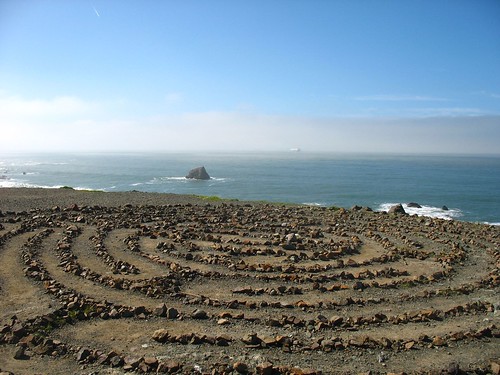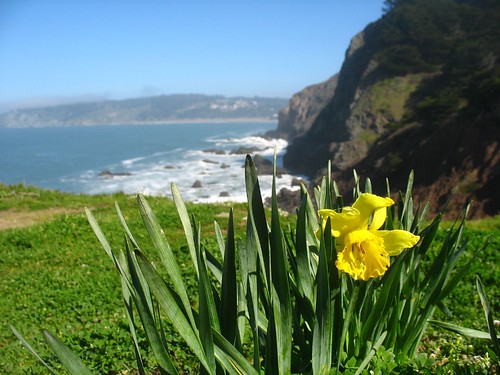I'm not gonna let her have all the fun!
Just this very day I noticed that I have good germination for Camassia quamash! I keep a fairly close watch on my seed flats, but maybe these came up a few days ago and I failed to notice.

I neglected to write down the date I sowed this flat (bad gardener!), but I can tell you it was several months ago. I expected these to take a long time, and I put the flat in an obscure location so I could manage my space most efficiently. Amazing that they call came up more or less at the same time, huh?
Another species that took a long time for me: Iris douglasiana. This is a coastal species native to northern California, and all the way up to Oregon.
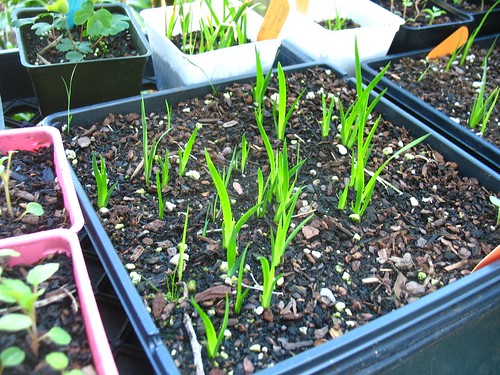
Actually, I have two flats of Doug Iris. One is fresh seed from the Botanical Garden (which sprouted quickly), and the other is seed I bought from JL Hudson (which took a few months). Iris has a slow, hypogeal germination. Fresh seed is supposed to work better.
From the Deno book:
"This genus [Iris] gave not only great diversity in germination but also some of the most extended multi-cycle germination observed. Germination is always hypogeal, and true leaves develop in a week or two once the radicle emerges even when germination was delayed for years."Can you imagine maintaining a seed flat for years? I'm practicing patience but I'm not there yet!
Some seeds apparently sprout faster after aging a few years. I understand that Cleome is an example (although I cannot now recall where I read that). Nor can I track down the garden blog I visited where everyone agreed that Cleome smells...icky. I haven't had much experience with Cleome, but it appears likely that I will have it in my garden this year. So far, one of five seeds have germinated.
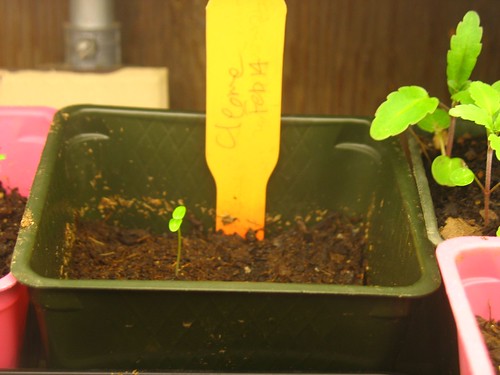
I started tomatoes. 'Black from Tula'--what a name, huh? I got them from Seed Savers, but you can get them from Amazon! Who knew.
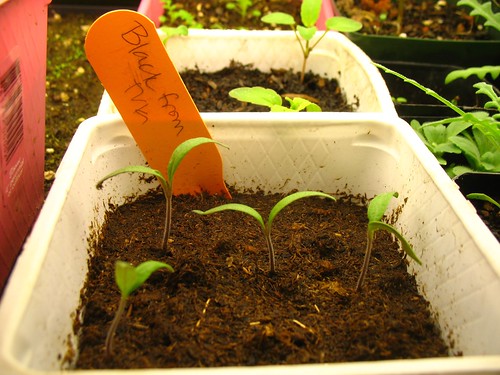
Frances and I both have Dierama pulcherrimum (an Iris family plant, btw). These are mine, and they look a little piqued. I need to prick these out and pot them up. Like, now.
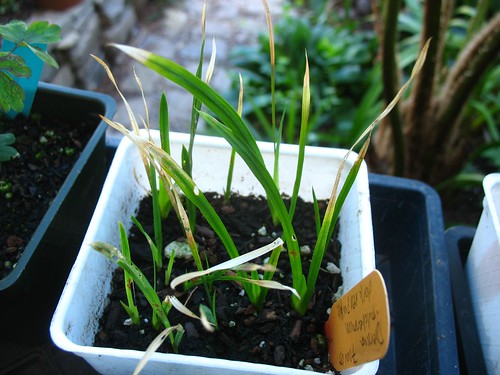
Claytonia perfoliata, Miner's Lettuce. I probably could have sowed this directly, but I wanted to be sure. I could thin this out, but I don't have to. I'll fork it out in sections, here and there in the garden.
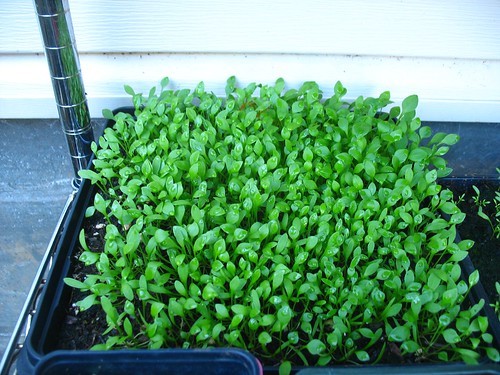
Madia elegans, Tarweed. If you visited whoreticulture anytime last summer or fall, you saw this annual's yellow daisy flowers. The foliage has a fragrance that cannot be blogged, and I love this plant. I've already planted out half the flat in my garden. I'll divvy up the remainders between my dad, my guru, and the Botanical Garden.
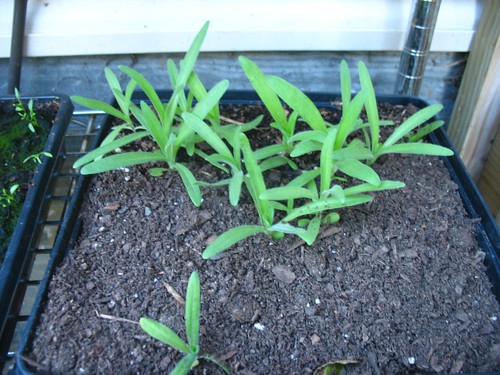
Some Clarkia (called Godetia in some parts..?). I sowed some seeds in containers simultaneously with some sown directly in the ground. Slugs have not bothered my direct-sown seedlings, so these may need to find another home.
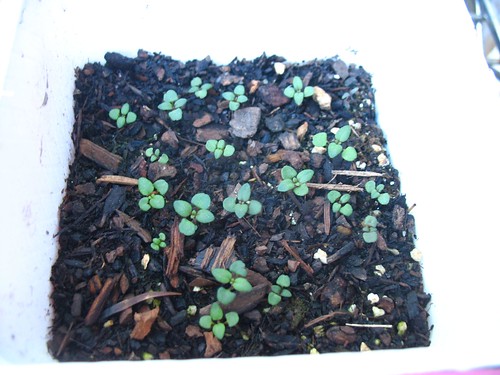
Mimulus pictus, endemic to hot, rocky places in southern California. This appeared in my Bloom Day posts several times last spring and summer. This one's about to bloom, and I haven't even planted it out yet!
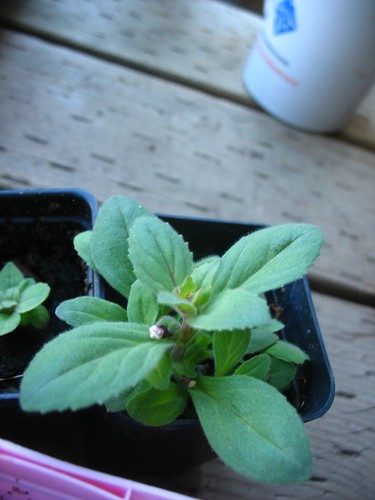
More wildflowers: Phacelia tanacetifolia on the left, and Layia platyglossa on the right.
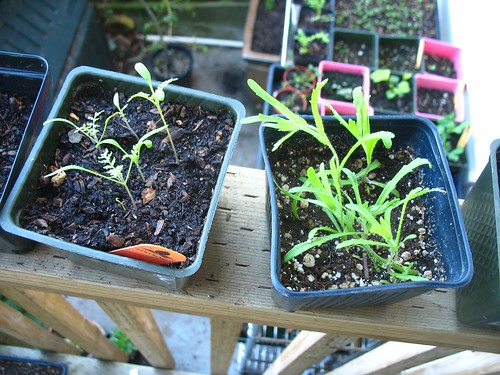
This Phacelia, obtained from three different sources, consistently produces long, etiolated seedlings. I plant them very low in the ground and they seem to do fine. The Layia I've learned to plant out late when the plants are large to minimize slug damage.
To show that I'm not a California plant snob, something from South Africa: Heliophila coronopifolia.

I did not sow these. Recently I ordered some perennials from High Country and I rounded out the order with *one* 2-inch pot of Campanula portenschlagiana. The one 2-inch pot was so packed with plantlings, I divided them into TWELVE!
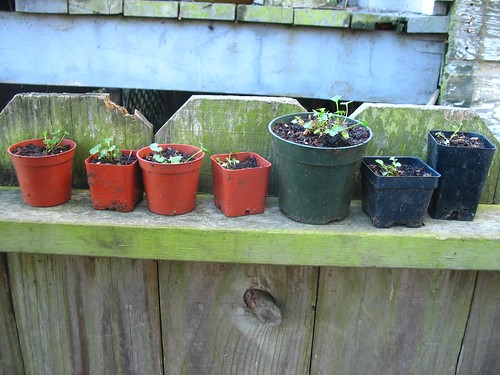
I must have been temporarily insane when I wrote in the comments at Garden Rant that I don't care for orange lilies. Or else I forgot all about these pots of Lilium pardalinum I grew from seed. This is another west coast native, from northern woods.
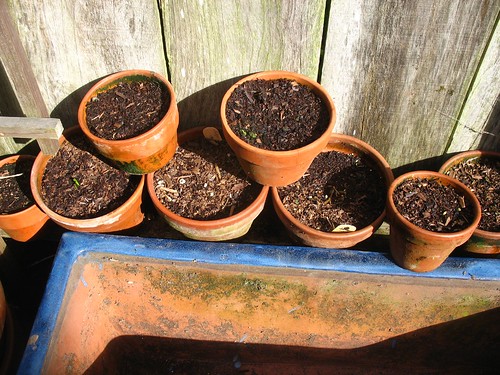
Deno:
"L. pardalinum is part of a group of lilies from the west coast of the U.S. that have their own unique hypogeal pattern. The group includes L. kelleyanum, pardalinum, parvum, shastense, washingtonianum, and probably other western U.S. species. Seed was sown in September and left outdoors until a year later. It was then placed at 40 degrees whereupon 80-90% germinated in the second week. On shifting to 70 degrees three months later, the single true leaf developed. The bulb formation is similar to the L. michiganense group in that the bulb forms inside or barely outside the seed coat."I didn't provide my seeds with so much temperature fluctuation, but there was some, and germination was complete only after several months. I started seed in the refrigerator in a baggy with some moist perlite and vermiculite, and sowed them in flats six weeks later. I did some diurnal temperature fluctuation for a few weeks, and then I put the flat outdoors and let it fend for itself. The leaves came right up. I kept the flat moist and fertilized, with fullest sun, through the rainy season, and then I let the flat dry out. After sitting dry all last summer, I dug up the bulbs and potted them. I've been keeping them moderately moist ever since.
We have leaves!
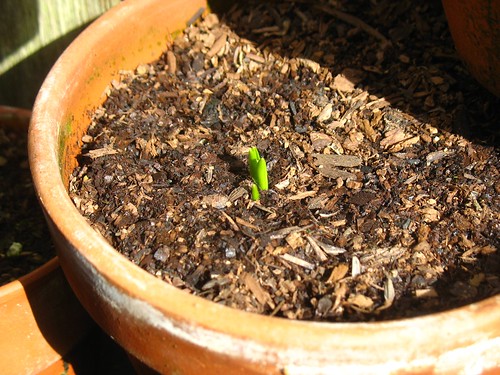
This is Jacaranda mimosifolia--no idea what I'm going to do with it. Put it in the free pile at the Botanical Garden most likely.

This Fuchsia boliviana can go in a client's garden.

Vaccinium ovatum, Evergreen huckleberry. Very slow germination for me. Slower than Iris douglasiana and Lilium pardalinum, but not as slow as Camassia quamash. And of course these grow very slowly as plants. To encourage birds, I'll keep as many of them as possible in my garden.
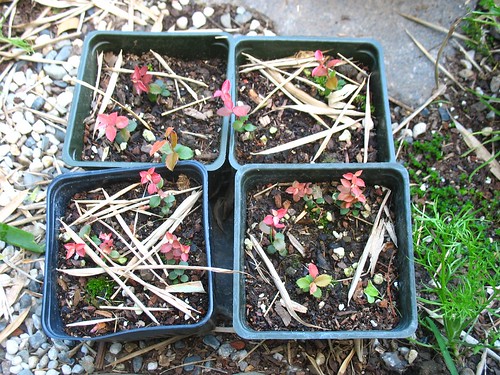
The only question is where...
